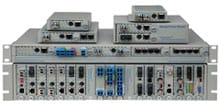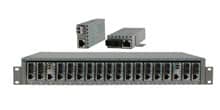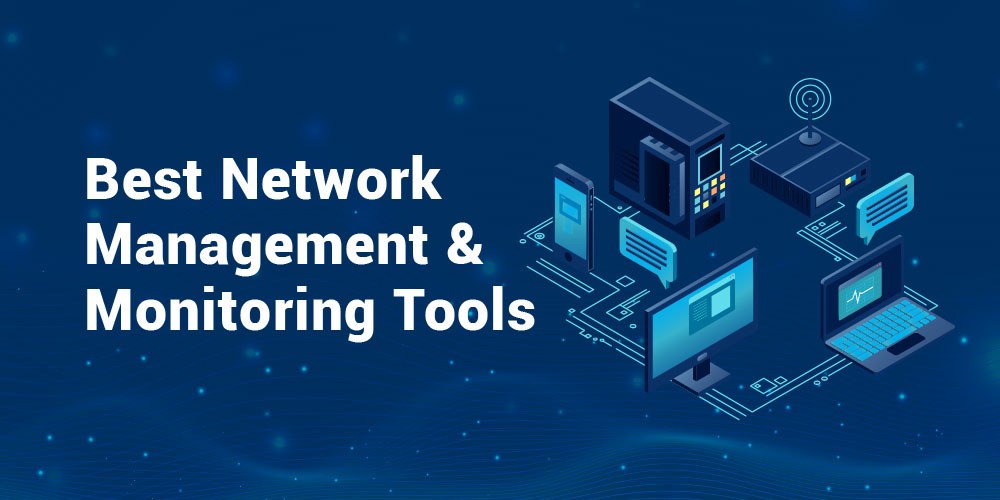- Products
- PoE Media Converters and Switches
- Ethernet & PoE Switches Product Selector
- Multi-Gigabit Ethernet and PoE Switches
- PoE PSE Commercial Switches
- PoE PSE Industrial Fiber Switches
- PoE Industrial Copper Extenders
- PoE Powered Media Converters
- PoE PSE Media Converters
- PoE Extenders & Injectors Product Selector
- Pluggable Transceivers Product Selector
- Product Lines

- iConverter Managed Multi-service Platform
- Copper to Fiber Media Converters
- Ethernet Media Converters
- 10 Gigabit Copper-to-Fiber
- 10/100/1000 Copper to 10 Gigabit Fiber
- 10/100/1000 Copper-to-Fiber with Integrated Management
- 10/100/1000 Industrial Copper-to-Fiber with Integrated Management
- 10/100/1000 Copper-to-Fiber with VLAN
- 10/100/1000 Dual Media Converter with VLAN
- Gigabit Copper-to-Fiber
- 10/100 Copper-to-Fiber with Integrated Management
- 10/100 Industrial Copper-to-Fiber with Integrated Management
- 10/100 Copper-to-Fiber with VLAN
- 10/100 Copper-to-Fiber
- Fast Ethernet Copper-to-Fiber
- Fast Ethernet Redundant Links
- 10Mbps Copper-to-Fiber
- 10Mbps Copper to Coax
- TDM Media Converters
- Serial Media Converters
- Ethernet Media Converters
- Fiber to Fiber Media Converters
- 10 Gigabit Fiber-to-Fiber Converter and Transponder
- 10 Gigabit Industrial Converter and Transponder
- SFP-to-SFP Fiber Converter and Transponder
- SFP-to-SFP Industrial Fiber Converter and Transponder
- Gigabit Fiber to-Fiber with 3 Rs
- 100/1000 Fiber-to-Fiber with 3 Rs
- Gigabit Fiber-to-Fiber
- Fast Ethernet Fiber-to-Fiber with 3 Rs
- Fast Ethernet Fiber-to-Fiber
- OC-3/STM-1 Fiber-to-Fiber
- OC-12/STM-4 Fiber-to-Fiber
- Carrier Ethernet Network Interface Devices
- CE 2.0 - 10G Demarcation NID
- CE 2.0 - 10G Demarcation and Aggregation NID
- CE 2.0 - 10/100/1000 Mult-port NID
- CE 2.0 - 10/100/1000 Mult-port NID with PoE
- CE 2.0 - 10/100/1000 8-Port NID
- SFP NID - Gigabit SFP NID
- microNID - 100/1000 compact NID
- CE 1.0 Service OAM - 10/100/1000 NID
- CE 1.0 Link OAM - 10/100/1000 Copper-to-Fiber NID
- CE 1.0 Link OAM - 10/100 Copper-to-Fiber NID
- CE 1.0 Link OAM - Gigabit Fiber-to-Fiber NID
- CE 1.0 Link OAM - Fast Ethernet Fiber-to-Fiber NID
- CWDM Multiplexers
- T1/E1 Multiplexers
- Ethernet Switch Modules
- Management System
- Chassis Options

- 1-Module Industrial Chassis

- RuggedNet Industrial Switches and Extenders
- Industrial PoE PSE Fiber Switches
- Multi-Gigabit Managed Industrial PoE+/BT Switches
- Multi-Gigabit Unmanaged Industrial PoE+/BT Switches
- 10G Managed 802.3bt PoE Switches
- 10G Unmanaged 802.3bt PoE Switches
- 10G Managed PoE+ Switches
- 10G Unmanaged PoE+ Switches
- 1G Managed PoE+ Switches
- 1G Unmanaged PoE+ Switches
- 1G Unmanaged 802.3bt PoE Switches
- 1G Managed 802.3bt PoE Switches
- Industrial Ethernet Switches
- Industrial PoE Copper Extenders
- Industrial Power Supplies

- OmniConverter Media Converter, Switches and Extenders
- PoE PSE Media Converters
- 10G Multi-Gigabit / Multi-Rate PoE Media Converter
- 10G Multi-Gigabit / Multi-Rate Media Converter
- 10/100 Multi-port PoE+ Media Converter
- 10/100 PoE+ Media Converter
- 10/100/1000 Multi-Port PoE+ Media Converter
- Industrial 10/100/1000 Multi-Port PoE+ Media Converter
- 10/100/1000 PoE+ Media Converter
- 10/100/1000 PoE++ 60W-100W Media Converter
- Industrial 10/100 Multi-port PoE+ Media Converter
- 1U Rack-Mount Shelf
- PoE PSE Compact Switches
- Multi-Gigabit Managed PoE+/BT Switches
- Multi-Gigabit Unmanaged PoE+/BT Switches
- 10G Managed 802.3bt PoE Switches
- 10G Unmanaged 802.3bt PoE Switches
- 10G Managed PoE+ Switches
- 10G Unmanaged PoE+ Switches
- 1G Managed PoE+ Switches
- 1G Unmanaged PoE+ Switches
- 1G Managed 802.3bt PoE Switches
- 1G Unmanaged 802.3bt PoE Switches
- Ethernet Switches
- PoE Copper Extenders
- Single Pair Ethernet Converters
- PoE Injectors

- miConverter Unmanaged Miniature Media Converters
- 10/100/1000 Copper-to-Fiber
- Industrial 10/100/1000 Copper-to-Fiber
- 10/100/1000 Ultra-Compact Copper-to-Fiber
- Gigabit Copper-to-Fiber
- 10/100/1000 Copper-to-Fiber PoE Powered
- 10/100 Copper-to-Fiber
- 10/100 Ultra-Compact Copper-to-Fiber
- 10/100 Copper-to-Fiber PoE Powered
- 18-Module Chassis
- Industrial 10/100 Copper-to-Fiber PoE Powered

- FlexSwitch Compact Switches
- Solutions
- Company
- Support
- How to Buy
Best Network Management & Monitoring Tools

Network management and monitoring tools play a crucial role in maintaining a seamless and efficient network. This blog explores the best network management and monitoring technologies, focusing on SNMP (Simple Network Management Protocol) for switches and media converters. We'll cover various aspects, including SNMP management, IPv4 and IPv6, Web, Telnet, SSH, SNMP versions (v1/v2c/v3), and serial interfaces.
Understanding SNMP (Simple Network Management Protocol)
SNMP is the backbone of network management, providing a standardized framework for managing and monitoring network devices. It facilitates the exchange of management information between network devices and central management systems.
This monitoring tool's primary purpose is to collect and organize information about devices on the network, modify the device parameters, and provide a mechanism for event notification. SNMP operates in the OSI model's application layer, facilitating the exchange of management information between a central management system and network devices.
SNMP Versions (v1/v2c/v3):
SNMP has evolved through different versions, each enhancing security and functionality. SNMPv1 and SNMPv2c offer basic management capabilities, but security concerns led to the development of SNMPv3. SNMPv3 introduces features like authentication and encryption, ensuring secure communication between devices and management systems.
1. SNMPv1 (Simple Network Management Protocol Version 1):
SNMPv1 was the first version of the protocol developed to facilitate the monitoring and management of network devices. It aimed to provide a simple, standardized way to collect information from SNMP agents embedded in managed devices.
Features and Characteristics:
Community Strings: SNMPv1 uses community strings as a form of authentication. These are essentially passwords that grant access to the SNMP agent's information.
Limited Security: One of the significant drawbacks of SNMPv1 is its lack of robust security features. Communication between devices occurs in clear text, making it susceptible to interception and unauthorized access.
GET, SET, and TRAP Operations: SNMPv1 supports basic operations such as GET (retrieve information), SET (modify parameters), and TRAP (unsolicited messages for event notification).
Use Cases:
SNMPv1 is still in use today, especially in environments where security concerns are minimal and basic monitoring and management functionalities meet the requirements.
2. SNMPv2c (Simple Network Management Protocol Version 2, Community-based):
SNMPv2c emerged as an enhancement to SNMPv1, addressing some of its limitations. It introduced improvements in functionality, but security remained a challenge.
Features and Characteristics:
Community-based SNMP: Like SNMPv1, SNMPv2c relies on community strings for authentication. However, it introduces the concept of SNMP communities, allowing for better organization and control of access.
GETBULK Operation: SNMPv2c introduced the GETBULK operation, enabling more efficient retrieval of large amounts of data with a single request.
Improved Protocol Operations: SNMPv2c refined certain operations and added new types, such as INFORM, for more reliable communication.
Use Cases:
SNMPv2c is widely used in scenarios where the benefits of enhanced functionality are desired and the security limitations of SNMPv1 are acceptable.
3. SNMPv3 (Simple Network Management Protocol Version 3):
SNMPv3 represents a significant protocol evolution, primarily focusing on addressing the security concerns that plagued its predecessors. It introduced robust security features to make SNMP more suitable for modern, secure network environments.
Features and Characteristics:
Security Enhancements: SNMPv3 includes features such as authentication and encryption, ensuring the confidentiality of SNMP messages. Users can employ usernames, passwords, and cryptographic algorithms to secure communications.
Message Integrity and Privacy: SNMPv3 provides mechanisms to verify the integrity of messages and encrypt sensitive information, addressing the security vulnerabilities present in SNMPv1 and SNMPv2c.
User-based Security Model (USM): SNMPv3 utilizes the User-based Security Model, which allows for fine-grained control over access and privileges.
Use Cases:
SNMPv3 is the preferred choice in environments where security is a top priority. It is widely adopted in enterprise and government networks, data centers, and other network applications where sensitive information requires protection.
SNMP Management for Switches:
Switches are pivotal in network connectivity, and SNMP enhances their management capabilities. SNMP-managed switches allow administrators to monitor device health, track performance metrics, conduct PoE power-cycles, and receive alerts for anomalies. SNMP traps provide real-time notifications, ensuring proactive issue resolution.
SNMP Management for Media Converters:
Media converters bridge the gap between different network technologies. Integrating SNMP into media converters enables administrators to oversee the status of media conversion processes, track link quality, and ensure seamless data transmission across diverse media types.
Web-based Management:
Web-based management interfaces provide a user-friendly way to configure and monitor network devices. Administrators can access an intuitive graphical interface through a web browser to make configuration changes, perform PoE power-cycles, view performance metrics, create VLANs, and troubleshoot issues without requiring specialized software.
Telnet and SSH Management:
Telnet and SSH (Secure Shell) are command-line interfaces that enable remote management of network devices. While Telnet transmits data in plain text, SSH encrypts the communication, ensuring secure access. Both protocols are valuable for configuring devices, performing diagnostics, and troubleshooting remotely.
Serial Interfaces for Robust Connectivity:
Serial interfaces remain crucial for managing network devices, especially when direct physical access is limited. Serial interfaces enable administrators to configure and troubleshoot devices even when network connectivity is unavailable.
IPv4 and IPv6 in Network Management and Monitoring:
IPv4 (Internet Protocol version 4) and IPv6 (Internet Protocol version 6) facilitate communication across networks, and their adoption has implications for how network devices are managed and monitored.
1. Addressing:
- IPv4 uses a 32-bit address scheme, providing approximately 4.3 billion unique addresses.
- Due to IPv4's limited address space, Network Address Translation (NAT) has become widely used to conserve address space.
- IPv6, designed to overcome the limitations of IPv4, uses a 128-bit address scheme, resulting in an astronomically large address space.
- The vast IPv6 address space eliminates the need for NAT and simplifies network management by providing globally unique addresses to every device.
2. Device Discovery and Management:
- Traditional IPv4 network management relies on protocols like ARP (Address Resolution Protocol) for device discovery within a local network.
- Devices based on IPv4 are commonly managed and monitored using SNMP (Simple Network Management Protocol). Administrators use SNMP to retrieve information, configure devices, and receive alerts.
- IPv6 introduces ICMPv6 (Internet Control Message Protocol version 6) Neighbor Discovery Protocol for device discovery and management, eliminating the need for ARP.
- SNMP also applies to IPv6 networks, with support for managing IPv6-enabled devices. SNMPv3, with its enhanced security features, is particularly important for secure management in IPv6 environments.
3. Routing and Traffic Monitoring:
- Routing in IPv4 networks is commonly managed using protocols like RIP, OSPF, and BGP.
- Network monitoring tools like packet sniffers and flow analyzers are designed to handle IPv4 traffic.
- IPv6 introduces new routing protocols, such as OSPFv3 and BGP4+, to support the larger address space and different addressing structures.
- Network monitoring tools must be updated to support IPv6 traffic analysis and ensure compatibility with the new protocol.
4. Security Considerations:
- IPv4 networks are susceptible to various security threats, including IP spoofing, denial-of-service attacks, and unauthorized access.
- Security protocols like IPsec can be employed for securing IPv4 communications.
- IPv6 incorporates security features by design, and IPsec support is mandatory in IPv6 implementations.
- The use of IPsec in IPv6 enhances the security of communications, providing authentication, integrity, and confidentiality.
5. Transition Mechanisms:
- Many networks still primarily use IPv4, necessitating transition mechanisms like dual-stack (supporting IPv4 and IPv6) and tunneling for coexistence.
- As IPv6 adoption grows, network management strategies must incorporate seamless transition mechanisms to ensure interoperability with IPv4 and IPv6 networks.
Final Note
Omnitron's iConverter managed media converters and network interface devices have Integrated IPv4, IPv6, SNMPv1/v2c/v3, SSH, Telnet, and IP-less 802.3ah OAM management. They can also be managed via Command Line Interface or Omnitron's NetOutlook SNMP Management software. Telecom Service Providers, Enterprises, and Government users can leverage the full capabilities of Omnitron's managed multi-service platform to help:
- Lower operating costs using its remote configuration and provisioning, which reduces technician trips to the equipment.
- Improve network reliability using its performance monitoring, fault detection, and isolation tools.
- Increase end user/subscriber satisfaction by optimizing network performance and uptime.
Omnitron's OmniConverter and RuggedNet managed Ethernet and PoE switches can also be managed via Web, Telnet, SSH, SNMPv1/v2c/v3, and serial interfaces. The IP-based web management can be accessed through any of the Ethernet RJ-45 or uplink ports and facilitates each port's configuration and real-time operation monitoring. The web management also has a user-friendly Hierarchical Command Line Interface. The management enables users to create PoE power schedules and perform rate limiting and Class of Service queue prioritization. These management interfaces provide access to filtering and security options, such as broadcast storm prevention, IGMP, IEEE 802.1x, RADIUS, TACACS+, and Access Control Lists. Email notification and alarm reporting are also provided.
The web management software provides intuitive and easy-to-navigate menu options and assists network managers with the following:
- Remote Configuration and Monitoring
- Detailed PoE Port Status
- Smart PD alive heartbeat check
- Individual port PoE power reset
- PoE power scheduling for security and energy saving
- Text and Email Notifications
- Easy firmware updates
If you have any future questions, give us a call; we are available 24/7 to answer your questions. Call us now.









